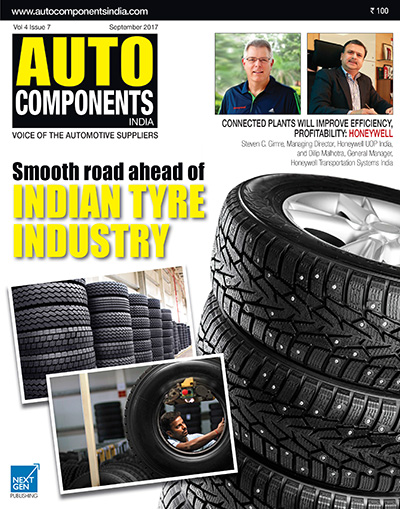In the world tyre industry there have been many technological changes from the bias or diagonal ply to the steel-belted radial tyres, tubeless tyres, tyres with low aspect ratios, puncture resistant tyres, etc. Testing standards also evolved accordingly to ensure high performance, mileage, safety, reliability and durability of the tyres. The tyre manufacturers are investing in ‘green tyres’. Innovative technologies for the raw materials are also being tested. The Indian tyre industry has been quick to adopt the latest technologies through foreign collaborations and tailoring them to suit the local needs and in investing heavily on new production facilities.
India has emerged as one of the most competitive tyre markets in the world. With the emergence of new technologies and ultra-modern production facilities, the sector is poised to grow further. The tyre industry, as an ancillary to the automotive industry, is set to soar as India is expected to become the fourth largest vehicle producer in the world by 2020 after China, the US and Japan. Already India is the second largest two-wheeler manufacturer in the world. The demands and expectations of the automotive industry and the motorists from tyres have been manifold. A tyre has to meet the mutually opposing demands of grip, low rolling resistance, lightweighting, sturdiness and fuel efficiency.
The market for radial tyres in the commercial vehicles segment has seen rapid growth in recent times. The current adoption levels of radial tyres in CVs are around 70%. The passenger car segment switched to radial tyres earlier, and within a short period, penetration levels reached almost 98%. Complete radialisation of passenger cars is almost at hand.
Among the many challenges faced by the organised tyre industry are the volatility in the supply and the price of raw materials, especially natural rubber, and a lop-sided import policy that leads to liberal tyre imports from China. The imported Chinese truck and bus radials (TBRs) are priced below the local tyres leading to a price war in the domestic market. Recently The Directorate General of Anti-Dumping and Allied Duties (DGAD) in the final report has recommended the imposition of anti-dumping duty on TBR tyre imports from China, which is a welcome move.
On another front, a model Rubber Incubation Centre, the first of its kind in India, is to be set up at the Rubber Research Institute of India (RRII), Kottayam, Kerala. This will boost innovation and an inter-disciplinary approach in all spheres, including R&D, technology, design, commercialisation and marketing. Such an approach is essential to synergise competencies in a globalised world and to survive amid challenges. The market dynamics and the multifaceted collaborative efforts ensure a smooth road ahead of the Indian tyre industry.
Bhargav TS
Executive Editor
s.bhargav@nextgenpublishing.net






Leave a Reply